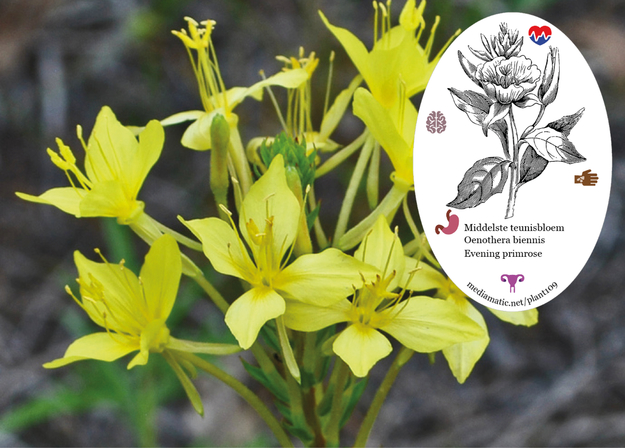The bark and the leaves are astringent and sedative.. They have proved of use in the treatment of gastro-intestinal disorders of a functional origin, whooping cough and asthma. A syrup made from the flowers is also an effective treatment for whooping cough. The bark is stripped from the flowering stem and dried for later use, the leaves are also harvested and dried at this time. Evening primrose oil has become a well-known food supplement since the 1980's. Research suggests that the oil is potentially very valuable in the treatment of multiple sclerosis, pre-menstrual tension, hyperactivity etc. It is also taken internally in the treatment of eczema, acne, brittle nails, rheumatoid arthritis and alcohol-related liver damage. Regular consumption of the oil helps to reduce blood cholesterol levels and lower the blood pressure. The seed is a good source of gamma-linolenic acid, an unsaturated fatty acid which assists the production of hormone-like substances. This process is commonly blocked in the body, causing disorders that affect the uterine muscles, nervous system and metabolism. The poulticed root is applied to piles and bruises. A tea made from the roots is used in the treatment of obesity and bowel pains. Source: https://pfaf.org/
Evening primrose
Oenothera biennis
Find more about this plant on Wikipedia.
